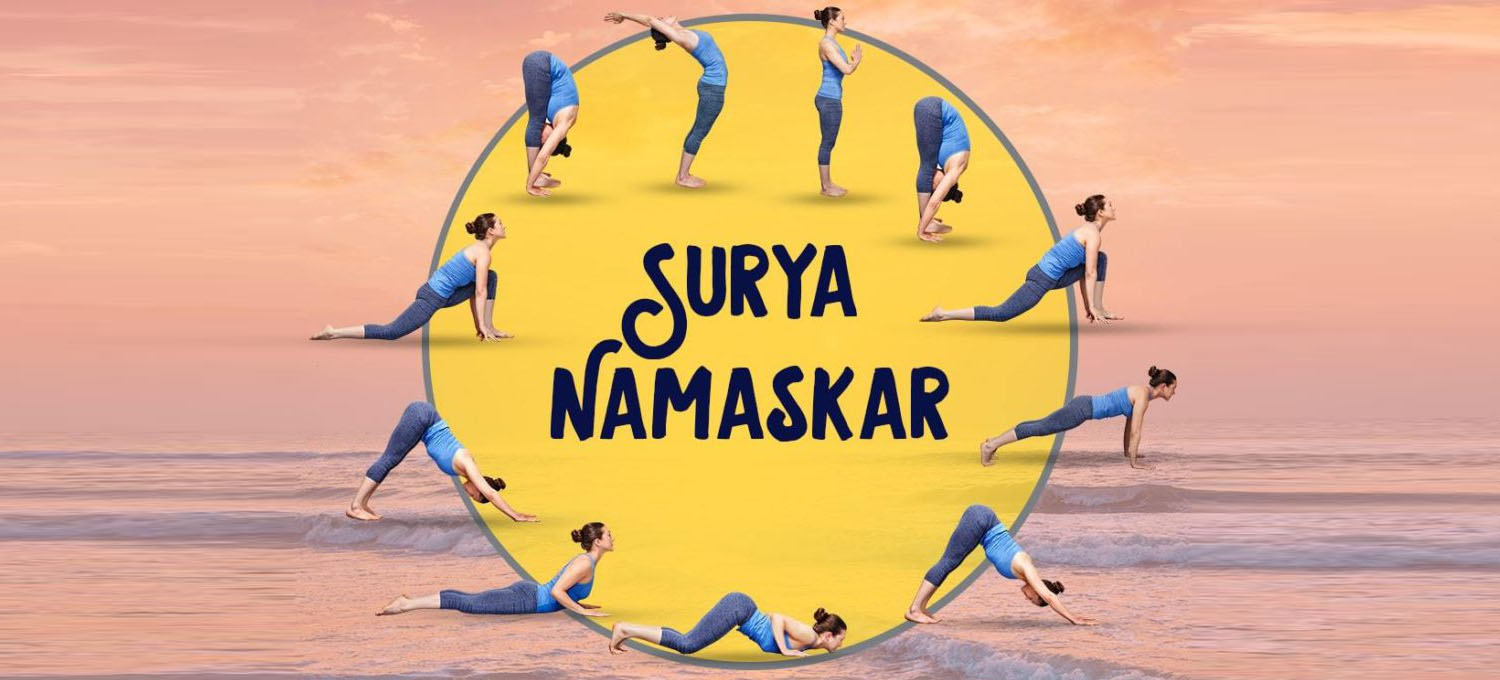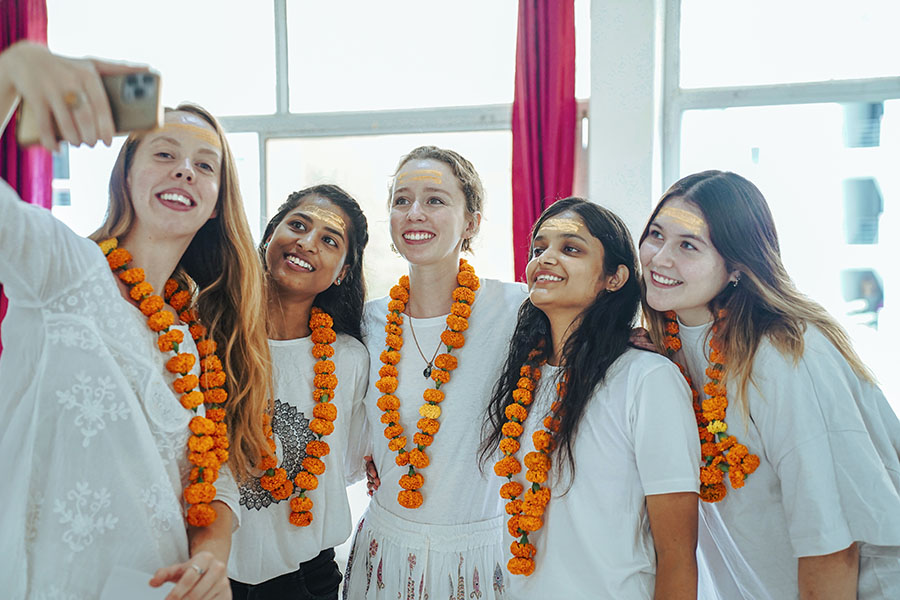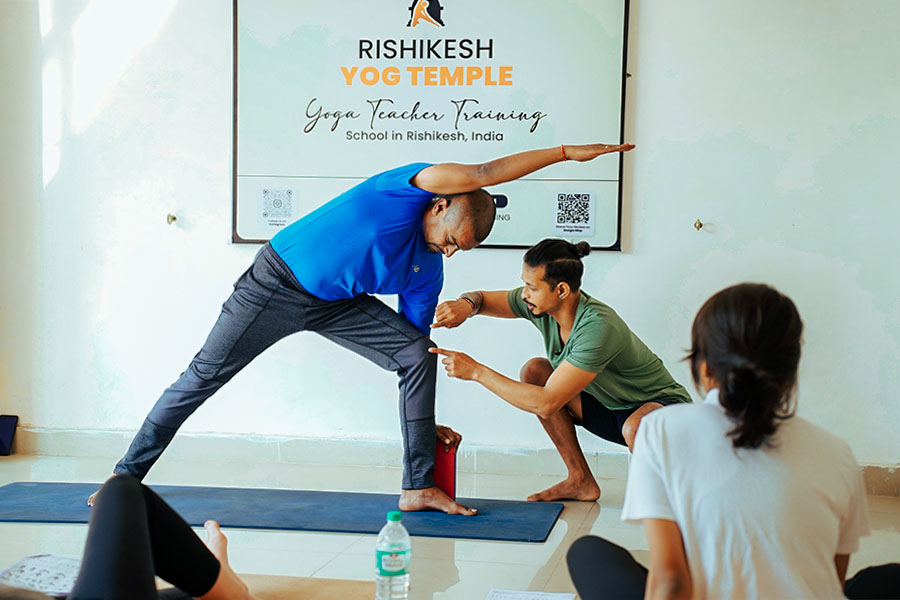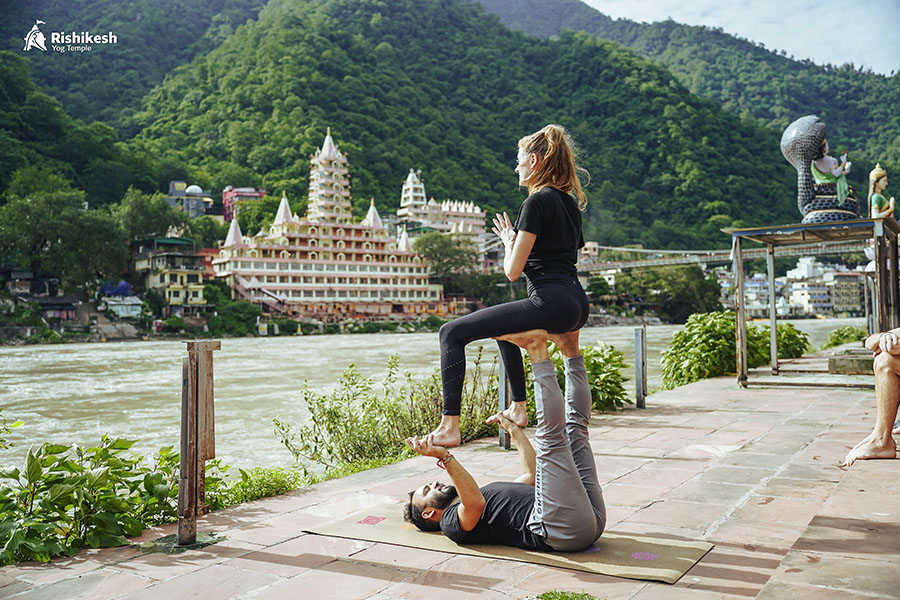Home » Yoga Blog » Surya Namaskar

Surya Namaskar
"Yoga is not a work-out, it is a work-in. And this is the point of spiritual practice; to make us teachable; to open up our hearts and focus our awareness so that we can know what we already know and be who we already are." - Rolf Gates
Surya Namaskar, as understood by the name, is a way to show your devotion to the Sun. It is a practice in itself. In this blog, you get to explore more about this traditional practice.
What is Surya Namaskar?
Also known as Sun Salutation, Surya Namaskar is a continuous sequence of 12 yoga asanas. It is done to honor and express gratitude to the Sun. Also, it is a popular practice in many styles of yoga and is often used as a warm-up or as a full-body workout. Each posture in the sequence is linked to an inhale or an exhale, and the movements are synchronized with the breath. Surya Namaskar is known for its ability to improve flexibility, strength, and overall health, while also promoting mindfulness and inner peace. It is a powerful practice that can be adapted to suit different levels and abilities, making it accessible to all practitioners.
In Hindu Texts, each asana of Surya Namaskar is linked to a specific mantra. Performing each of them with mantras increase the benefit of the practice and help you in achieving your goal.
Benefits of Surya Namaskar
- It is the best for weight loss.
- It maintains the perfect body.
- It nourishes the scalp, making hair healthy.
- It gives glowing skin.
- It improves the digestive system.
- It manages the menstrual cycle.
- It lowers blood sugar levels.
- It improves the function of the lungs.
- It cures Insomnia.
12 asanas of Surya Namaskar?
Pranamasana (Prayer pose)
Mantra – “Om Mitraye Namaha”
Meaning: The first mantra considers Surya as "Mitra" or "Friend". Without any discrimination, Sun illuminates the world equally amongst all in the universe. It symbolizes friendship. In the first asana, we are offering our prayers to the Sun who is like a friend to all.
How to practice?
- Stand on the edge of the mat.
- Keep your feet together so that your weight is distributed equally on the two feet.
- Expand the chest.
- Relax the shoulders.
- Lift both of your arms while inhaling.
- Exhale and bring your palm in the namaste pose or prayer pose.
Hasta Uttanasana (Raised arms pose)
Mantra – “Om Ravaye Namah”
Meaning: "Ravaye" or "Ravi" means "radiating". The second mantra is referring the sun as the radiant or shiny one. In this, we offer gratitude for its radiance.
How to practice?
- From Pranamasana, breathe in and slowly lift your arms in the backward direction.
- Your biceps should be close to the ears.
- Stretch the whole body.
- Don't bend completely backwards but let your fingers reach up while stretching.
- Also, to deepen the stretch, you can push your pelvis forward.
Padahastasana (Standing forward bend)
Mantra – “Om Suraya Namaha”
Meaning: In the third shloka, Suraya or Surya, i.e. the Sun is to be praised as a Hindu God for demonstration of the day and life on Earth. It expresses gratitude to the one who does the activity. When we bend our body forward while chanting this mantra, we connect our inner self to the Earth.
How to practice?
- From the second asana, bend forward from the waist.
- Keep your spine erect.
- Keep both hands on the floor beside the feet while bending forward.
Ashwa Sanchalanasana (Equestrian pose)
Mantra – “Om Bhanave Namaha"
Meaning: "Bhanave" is a Sanskrit word derived from "Bhanu". "Bhanu" is the synonym of Surya. It gives the meaning as the one which is the source of light. With this, we give salutation to the one who illuminates and removes darkness from our lives.
How to practice?
- Maintain the last pose and breathe in.
- Stretch the right leg in the backward direction as far as possible.
- Place the right knee on the mat.
- Look up while raising your face.
- The left leg should be in the same position as in the previous pose.
Chaturanga Dandasana (four-limbed staff pose)
Mantra – “Om Khagaye Namaha”
Meaning: "Khagaye" or "Khag" is the one who resides in the sky. The shloka and the asana express prayers to the one who moves or resides in the sky.
How to practice?
- From Ashwa Sanchalanasana, stretch your left leg back.
- Your hand should be perpendicular to the floor.
- With this, your whole body comes in a shape of a line.
Ashtanga Namaskar (eight-limbed pose)
Mantra – “Om Pushne Namaha”
Meaning: "Pushne" means "Poshan", i.e. "nourishment". The Sun is the one that gives nourishment to every being. The pose pays salutations to the one who gives us strength and nourishment.
How to practice?
- Remain in your previous asana and exhale.
- While exhaling, bring your knees down slowly in the way that it touches the floor.
- Take your hips back and slide forward.
- Rest your chest and chin on the floor.
Mantra – “Om Hiranya Garbhaya Namaha”
Meaning: "Hiranya Garbhaya" is the two words meaning "Hiran" means "Deer" and "Garbha" means "Womb". It is known as the starting life in the Universe. With respect to the Sun, it is considered the golden cosmic body that manifests life.
How to practice?
- Slide forward from the previous pose.
- Exhale and raise your chest upward.
- Come into the Cobra Pose.
- Bent your elbows.
- Shoulders should be away from the ears.
Adho Mukha Svanasana (Downward dog pose)
Mantra – “Om Marichaye Namaha”
Meaning: "Marichaye" or "Marich" is also the synonym for the Sun. It means "the ray of light". With this, one conveys gratitude to the Lord of the Dawn.
How to practice?
- From the last step, lift your hips upward while exhaling.
- You need to bring the body to make it look like an inverted "V".
Ashwa Sanchalanasana (Equestrian pose)
Mantra – “Om Adityaye Namaha”
Meaning: "Adiyaye" or "Aditya" is the son of Aditi (known as the universal mother). In this mantra, the Sun is being praised as the son of the cosmic mother and we are bowing down to him.
How to practice?
- This is the same as the Pose 4 of Surya Namaskar.
Padahastasna (Standing forward bend)
Mantra – “Om Savitre Namah”
Meaning: "Savitre" or "Savitri" is the first word which denotes Surya. It is mentioned in the oldest Vedic Text, "Rig Veda". Savitri is the time before sunrise. We express gratitude to the one who gives us energy.
How to Perform?
- This is the same as the Pose 3 of Surya Namaskar.
Hasta Uttansana (Raised arms pose)
Mantra – “Om Arkaya Namah”
Meaning: "Arkaya" is derived from the word "Ark". It denotes something which can be worshipped.
How to practice?
- This is the same as the Pose 2 of Surya Namaskar.
Pranamasana (Prayer pose)
Mantra – “Om Bhaskaraya Namah”
Meaning: "Bhaskaraya" is the Sanskrit word which means "Bhaskar" in Hindi. "Bhaskar" is the combination of the two words "Bha" meaning "light and knowledge" and "Kar" meaning "do". It refers to the one that brings light and knowledge to an individual.
How to practice?
- This is the same as the Pose 1 of Surya Namaskar.




